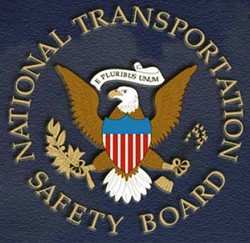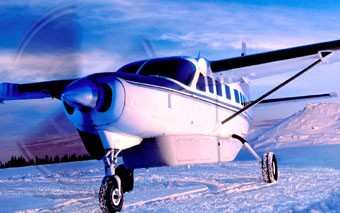Sun, Jul 05, 2009
Pilot Suffered Hypoxia, 10 On Board Killed
 The NTSB has issued a probable cause report in the 2007
accident which claimed the lives of the pilot and 9 skydivers near
Natches, WA. The summary of the report reads:
The NTSB has issued a probable cause report in the 2007
accident which claimed the lives of the pilot and 9 skydivers near
Natches, WA. The summary of the report reads:
The pilot was returning a group of skydivers to their home base
after a weekend of skydiving. He flew several jump flights, and
then stopped early in the afternoon to prepare the airplane for the
flight home. The flight was planned into an area of clouds,
turbulence, and icing, which the pilot had researched. He delayed
the departure until he decided that he could complete the planned
flight under visual flight rules (VFR). The accident occurred at
night with little illumination of the moon, and the airplane was in
an area of layered clouds. A detailed analysis of the weather
conditions revealed that the flight probably encountered broken to
overcast layers both below and above its flight altitude. The
satellite and sounding images suggested that it was possibly in an
area of mountain wave conditions, which can enhance icing. The
recorded radar data indicated that the pilot was likely maneuvering
to go around, above, or below rain showers or clouds while
attempting to maintain VFR. The airplane likely entered clouds
during the last 3 minutes of flight, and possibly icing and
turbulence. It was turning when it departed from controlled flight,
and a performance study showed that the angle-of-attack at this
point in the flight was increasing rapidly. The study determined
that the departure from controlled flight was consistent with an
aerodynamic stall.

File Photo
The unpressurized airplane was flying at over 14,000 feet mean
sea level for more than 1 hour during the flight. It reached 15,000
feet just prior to the accident in sequential 360-degree turns
while climbing and descending. Supplemental oxygen was not being
used. At these altitudes, the pilot would be substantially impaired
by hypoxia, but would have virtually no subjective symptoms, and
would likely be unaware of his impairment. The pilot had logged
over 2,000 hours of total flight time, with nearly 300 hours in
this make and model of airplane. He was instrument-rated, but had
only logged a total of 2 hours of actual instrument flight time.
Company policy was to fly under visual flight rules only, and they
had not flight-checked the pilot for instrument flight.
The National Transportation Safety Board determines the probable
cause(s) of this accident as follows:
The pilot's failure to maintain an adequate airspeed to avoid an
aerodynamic stall while maneuvering. Contributing to the accident
were the pilot's impaired physiological state due to hypoxia, the
pilot's inadequate preflight weather evaluation, and his attempted
flight into areas of known adverse weather. Also contributing were
the pilot's inadvertent flight into instrument meteorological
conditions that included clouds, turbulence, and dark night
conditions.
More News
Pilot Also Reported That Due To A Fuel Leak, The Auxiliary Fuel Tanks Were Not Used On June 4, 2025, at 13:41 eastern daylight time, a Piper PA-23, N2109P, was substantially damage>[...]
From 2023 (YouTube Edition): Reflections on War’s Collective Lessons and Cyclical Nature The exigencies of war ought be colorblind. Inane social-constructs the likes of racis>[...]
Pilot Reported That He Was Unfamiliar With The Single Seat Amateur-Built Airplane And His Intent Was To Perform High-Speed Taxi Testing Analysis: The pilot reported that he was unf>[...]
From 2023 (YouTube Edition): First Kits to Ship October 2023 Having formerly resurrected the storied shape of the Ryan ST—in effigy, anyway—Montrose, Colorado-based Tim>[...]
Performance-Based Navigation (PBN) [ICAO] Area navigation based on performance requirements for aircraft operating along an ATS route, on an instrument approach procedure or in a d>[...]
 NTSB Prelim: Piper PA-23
NTSB Prelim: Piper PA-23 Classic Aero-TV: One Mans Vietnam
Classic Aero-TV: One Mans Vietnam NTSB Final Report: Capella Aircraft Corp FW1C50
NTSB Final Report: Capella Aircraft Corp FW1C50 Classic Aero-TV: Timber Tiger Touts Curtiss Jenny Replicas
Classic Aero-TV: Timber Tiger Touts Curtiss Jenny Replicas ANN's Daily Aero-Term (07.04.25): Performance-Based Navigation (PBN) [ICAO]
ANN's Daily Aero-Term (07.04.25): Performance-Based Navigation (PBN) [ICAO]




